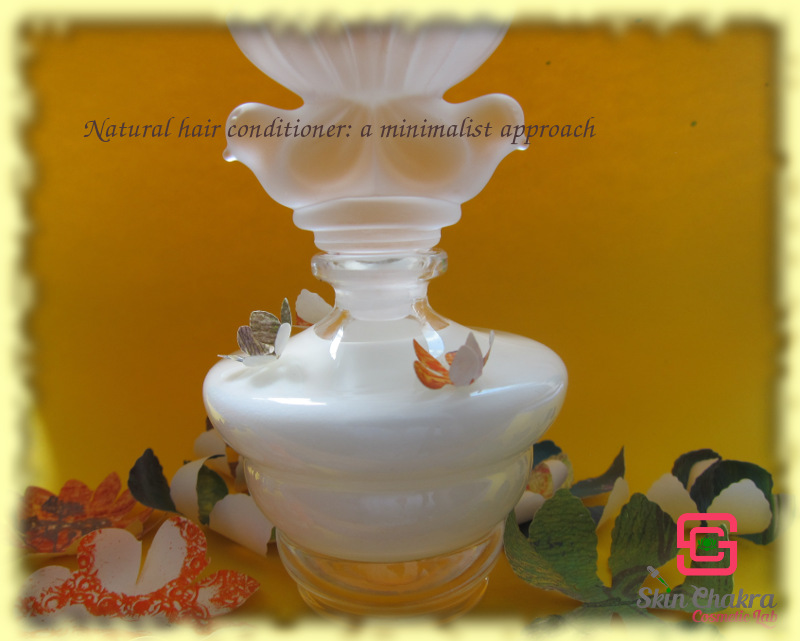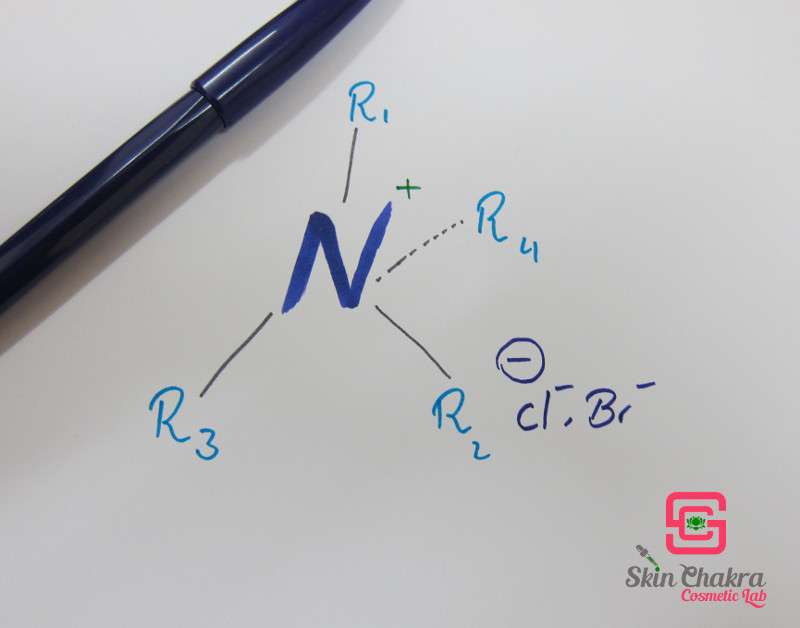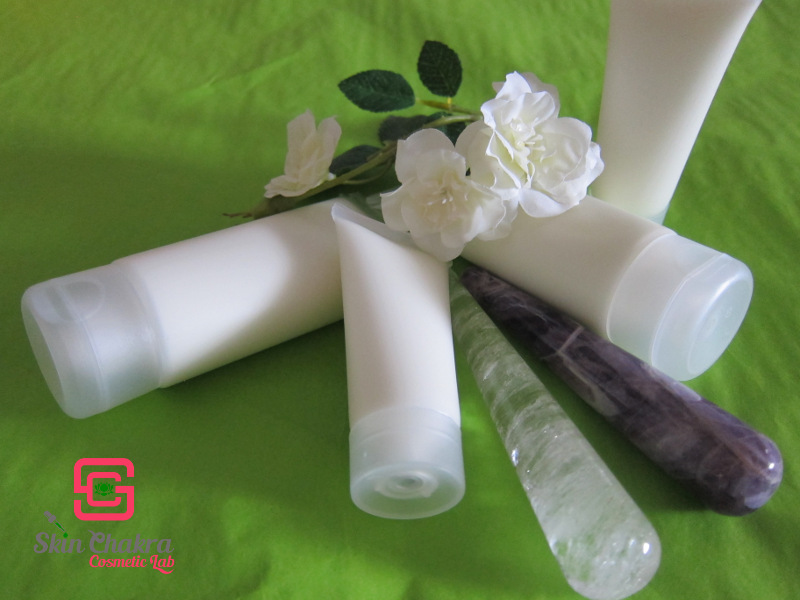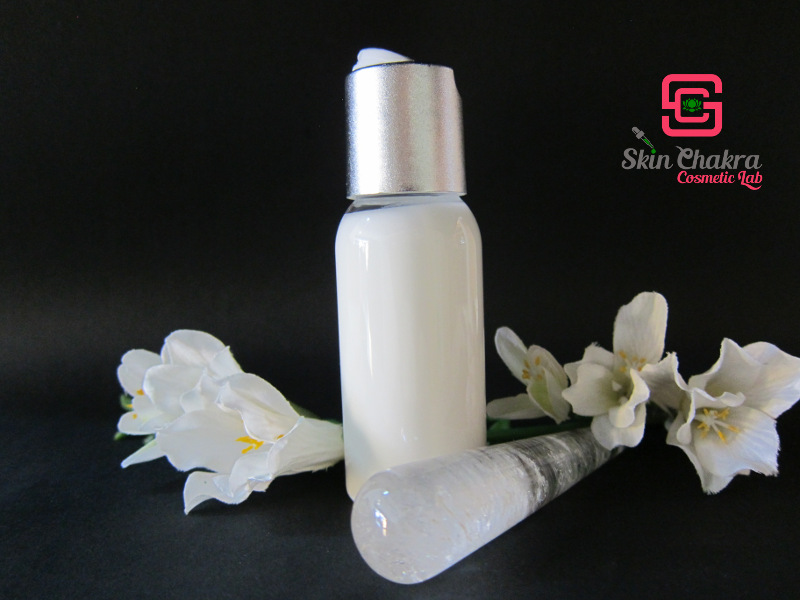
Donnerstag, 6. Dezember 2018
A minimalist approach to natural hair conditioner
It's quite odd that we have been selling tons of a "natural" cationic surfactant during the last three years but we have not have any tutorial for a conventional water-based hair conditioner. We have however shared some tutorials for non-aqueous hair conditioners and if you've just stumbled upon our blog I suggest you first go and have a look at them:
How to make a conditioning, anti-frizz balm
Cranberry hair conditioning balm
How to make a natural conditioning bar
About hair conditioners:
There are two approaches to hair conditioning:
1- Hair conditioning using a cationic surfactant
2- Hair conditioning using a non cationic emulsion
these approaches work in different ways but both could be effective. Although there are millions of "natural" hair conditioners available based on the second approach, the conditioners based on the first approach are quite rare.
1- Hair conditioning using a cationic surfactant
Hair (and wool and many other natural and synthetic fabrics) usually have a negative charge. Cationic surfactants attach to the negative charge to counteract it. To be more specific, in a hair conditioner, the cationic surfactant attaches to the keratin with its hydrophilic head and the hydrophobic tail dangles around. The whole molecule imparts antistatic, anti-frizz, lubricity, anti-friction and shine to the hair and makes combing of wet and dry hair easier.
2- Hair conditioning using a non-cationic emulsion
These emulsions impart lubricity and anti-friction (but not necessarily anti-static properties) to the hair and they do not attach to hair keratin as the cationic do (you may find it as an advantage or disadvantage depending on your point of view) and just sit on top of the hair fibers. They work the same way to use oil to lubricate a hinge.
No matter which concept you choose to follow, always keep in mind that you need to avoid build-up and a greasy appearance after the hair is rinsed. Too much oil in a conditioner will cause fast re-greasing (absorption of dirt) and an unhealthy appearance.
Cationic surfactants
Please have a look at our previous blog posts about surfactants before you proceed:
Science made easy: Surfactants 101 (part 1)
Science made easy: Surfactants 101 (part 2)
Hair conditioning world was monopolized by quarternary ammonium compunds till a couple of years ago and this is why "natural" hair conditioning is still in baby shoes.
Quarternary ammonium compounds are a huge family of ingredients but the base is a Nitrogen atom connected to 4 side groups (in ammonium ion we have a Nitrogen atom connected to 4 hydrogen atoms)
 This is a very simplistic model but will help you understand the concept. The molecule is 3 dimentional and doesn't rest flat on the surface. If the Nitrogen in the center of the molecule and R1, R2, R3 all lay flat on the surface of the paper, R4 would dangle under the surface. Since no cation exists without an anion (electroneutrality principle), quarternary ammoniums have a counter ion (usually chloride or bromide).
This is a very simplistic model but will help you understand the concept. The molecule is 3 dimentional and doesn't rest flat on the surface. If the Nitrogen in the center of the molecule and R1, R2, R3 all lay flat on the surface of the paper, R4 would dangle under the surface. Since no cation exists without an anion (electroneutrality principle), quarternary ammoniums have a counter ion (usually chloride or bromide).
Depending on the nature of the R group, the quarternary ammonium will have slightly different properties and completely different applications varying between:
- anti bacterials and disinfectants (in a broad range of industries from kitchen to dentist's pratice. I'm sure you have heard about or read the name "benzalkonium chloride" somewhere)
- Hair conditioners and detanglers (natural Betaine, trimethyl glycine is one of the simplest quarternary compounds and is used in shampoos and other hair care products as a detangler, antistatic and conditioning agent)
- Fabric softener
- antistatics
to name a few applications.
Regardless of the molecule size and its applications, almost all cationics have something in common:
1- Poor biodegradability
2- Skin sensitization
(This is why quarternaries, even the one and only (so far) plant based compound is not popular in "natural" hair care)
Now coming back to our own cationic surfactant which is the only and one (up to this point) non-quarternary and plant based cationic surfactant used in natural hair care:
Emulsense™ HC
INCI Name: Brassicyl Isoleucinate Esylate (and) Brassica Alcohol
- You can add emulsense HC to the oil/butter phase and heat the oil and water phase separately (70-75 oC) and then blend the two phases in the traditional way you make an emulsion.
- You can proceed via one-pot method and heat your oil and water phases in the same beaker from the beginning. This procedure is very helpful if you're making your first trials and are working in small batches (<100 gr)
After the oil and water phases are heated and all of the emulsense, butters and waxes are melted, you'll blend the oil and water phase exactly the same way you proceed with an O/W emulsion. (Add the oil phase to the water phase).
- aloe
- hydrosols
- most hydrophilic extracts and plant powders
This means you need to avoid these ingredients in your hair conditioner when your conditioner is based on Emulsense HC.
Do not be disappointed and do not throw this lovely ingredient into trash. There is no shame in simplicity.
| Phase A | |
| Freshly boiled distilled water | to 100,0% |
| L-Arginine | 0,3% |
| coco-glucoside, glyceryl oleate | 2,0% |
| palm-free Glycerine | 5,0% |
| Phase B | |
| Emulsense HC | 6,0% |
| Myrica fruit wax | 1,0% |
| PCA-Glyceryl oleate | 1,0% |
| Lexfeel natural | 1,0% |
| Cupuacu butter | 0,5% |
| Natural vit E | 0,5% |
| Phase C | |
| Spectrastat G2-N | 0,7% |
| Ylang-ylang oil | 1,0% |
Procedure:
1- Heat phase A and B separately in a water bath @ ca. 75 oC.
2- When all of phase B is melted stop heating and add phase B to A while stirring
3- homogenize for a few minutes and start cooling down while stirring. Stirring during cool-down is very important for a nice texture and stable conditioner
4- After the temperature has reached around 30 oC add the preservative and the essential oil.
5- Prepare a 10% dilution in distilled water and measure the pH. In our case it was 4,2. You made get another pH depending on the ingredients you use.
6- Take your micro kit and stability samples and fill the conditioner in a suitable bottle or tube.
7- Enjoy the luxury of a KISS formulation



